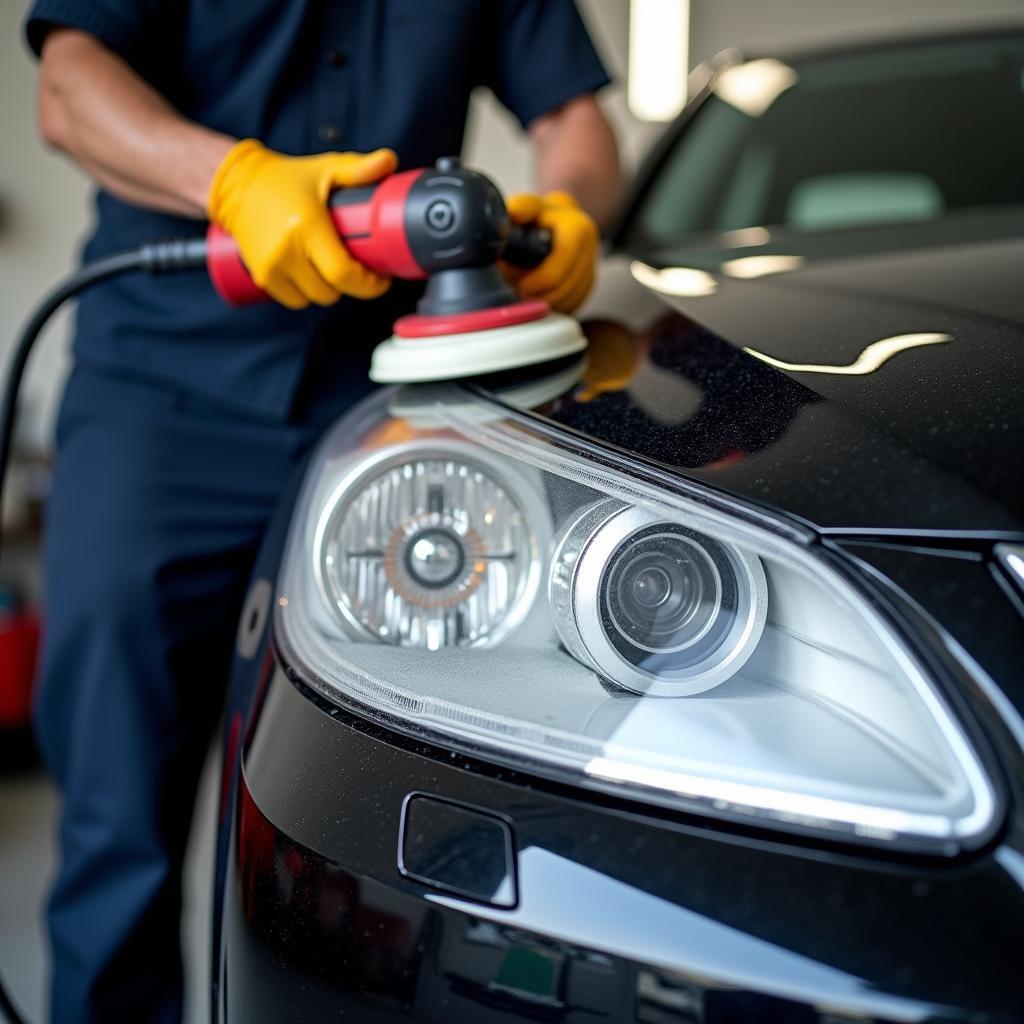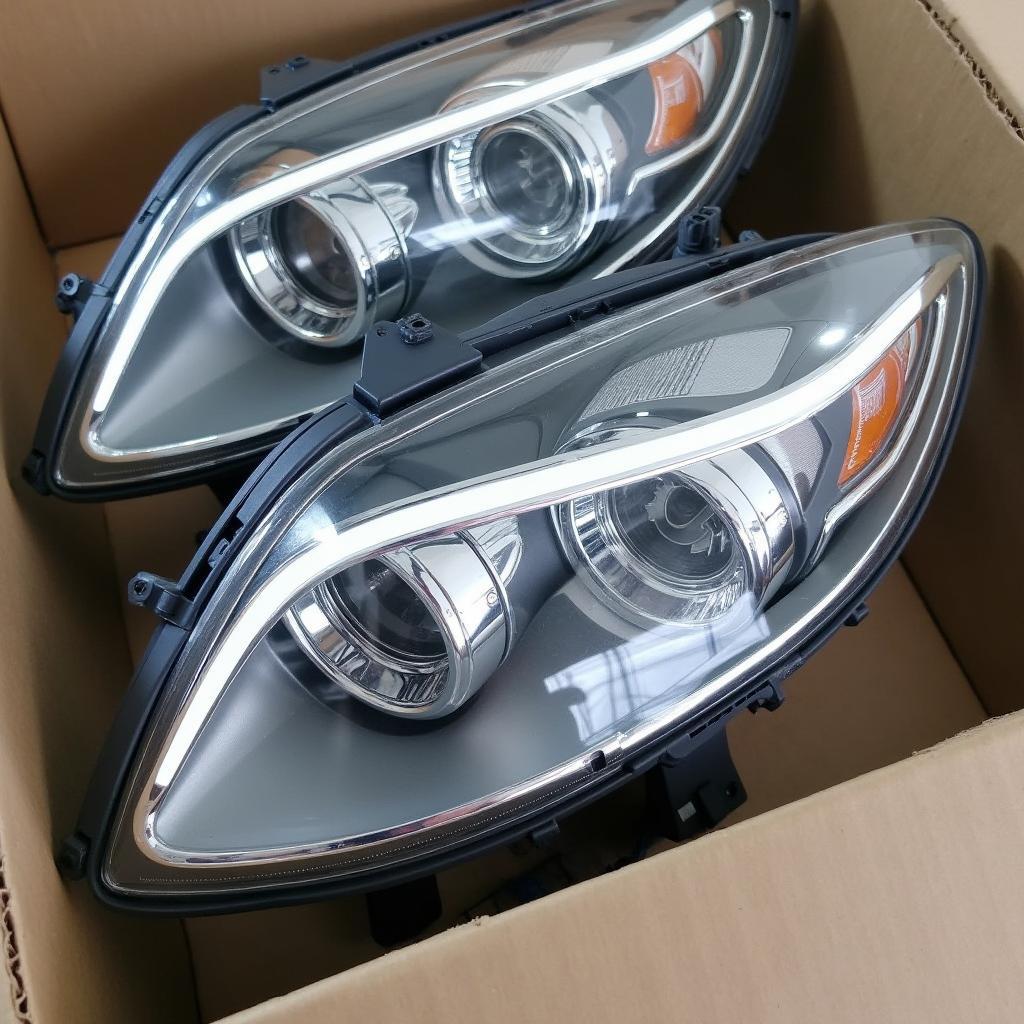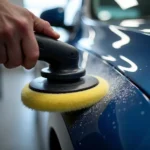Poor visibility in traffic is dangerous, especially at night. Hazy headlights contribute to this and are a common reason for failing the TÜV inspection. But what exactly does “hazy headlights” mean, what are the causes, and how can you fix the problem? This article will inform you about everything you need to know regarding hazy headlights and the TÜV.
What are “Hazy Headlights”?
“Hazy headlights” is a colloquial term for headlights that no longer emit their full light output. This can range from slight clouding to severely yellowed and nearly opaque headlights. The consequence: Restricted visibility for the driver and increased danger for all road users. The TÜV takes this issue very seriously, as hazy headlights significantly compromise road safety.
Causes of Hazy Headlights
The main cause of hazy headlights is the sun’s UV radiation. It attacks the plastic covers of the headlights, leading to yellowing and hazing over time. Other factors include stone chips, road salt, and weather influences. “The quality of the plastic plays a decisive role,” explains Dr. Klaus Müller, author of the book “Modern Vehicle Lighting.” “High-quality materials are significantly more resistant to UV radiation and other environmental factors.”
 Oxidized Headlights During TÜV Inspection
Oxidized Headlights During TÜV Inspection
Hazy Headlights: What to Do for TÜV?
Anyone going to the TÜV with hazy headlights must expect an objection. In most cases, a re-inspection will be necessary after the headlights have been repaired. Depending on the severity of the hazing, replacing the headlights may be necessary. “The TÜV checks the luminosity and the alignment of the headlights,” says Dr. Anna Schmidt, an expert in vehicle technology. “If the values are not within the tolerance range, you won’t get the sticker.”
Polish or Replace Headlights?
For slight hazing, polishing the headlights can be a cost-effective alternative to replacement. This involves removing the top layer of plastic and then sealing the headlights with a special protective coating. “Polishing is a good solution if the hazing is not yet too severe,” recommends Dr. Müller. “However, for deep scratches or severe yellowing, replacing the headlights is unavoidable.”
 Polishing Headlights to Prepare for TÜV
Polishing Headlights to Prepare for TÜV
Prevention is Better Than Repair
To prevent hazy headlights, you should clean your headlights regularly and treat them with a special UV protectant. “Regular maintenance can significantly extend the lifespan of your headlights,” advises Dr. Schmidt. “Parking in the shade can also help reduce UV exposure.”
Hazy Headlights: Costs and Effort
The cost of polishing headlights ranges from 30 to 80 Euros, depending on the provider. Replacing a headlight, on the other hand, can cost several hundred Euros. “The effort for polishing is relatively low,” says Dr. Müller. “However, replacing headlights requires more time and expertise.”
 New TÜV-Approved Headlights
New TÜV-Approved Headlights
More Questions About Hazy Headlights and TÜV:
- How often should I have my headlights checked?
- What products are suitable for cleaning and maintaining headlights?
- Are there special films to protect against UV radiation?
- What happens if I continue driving with headlights that have been objected to?
Do You Need Help with Your Headlights?
Autorepairaid.com offers you professional support for all questions regarding the repair and maintenance of your vehicle. Feel free to contact us, our experts are available 24/7.
Hazy Headlights for TÜV? We Can Help!
Hazy headlights are a safety risk and can lead to failing the TÜV. Regular care and maintenance can help prevent the problem. If your headlights are already hazy, various options are available to restore them. Contact autorepairaid.com for professional support.

